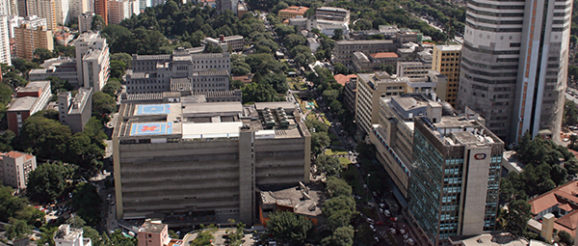Revitalizing healthcare through integration, cloud and digital innovation | I-CIO

Jacson Barros, CIO at Hospital das Clínicas, explains how a large-scale modernization of the Brazilian healthcare group’s core technology is enhancing patient care.
São Paulo’s Hospital das Clínicas (HC), one of the largest public health complexes in Latin America, is on a journey that will be familiar to many CIOs. Over several decades, its eight specialist institutes and associated hospitals evolved their own, largely siloed IT capabilities, supporting numerous bespoke systems and standalone applications. The challenge of integrating and modernizing that complex and inefficient structure, while injecting a new culture of digital innovation, has led the agenda of HC’s CIO Jacson Barros since 2011. And it’s a program that is now paying big dividends.
“My brief was clear,” says Barros, “to consolidate IT systems into a single management platform which would be the spinal cord for the whole hospital complex.” A second part to his mandate was more subtle and far-reaching: to establish a new digital mindset across his organization that would generate a stream of innovations designed to enhance patient care.
HC — which is supported by the University de São Paulo’s Faculty of Medicine — is renowned worldwide for its achievements academically and in healthcare performance, Barros says. But when he took over responsibility for IT at the group, the technology capabilities of its various institutes — which operate a desktop estate of about 11,000 machines — were at different levels of maturity. Moreover, the technology in use was determining many of the processes used at the hospital rather than the other way round.
Perhaps most importantly, a lack of investment and strategic direction over the years had resulted in an inability to integrate data from different units such as oncology, cardiology and paediatrics, making it difficult to treat patients holistically or track their histories.
Healthcare in the cloud
Before launching the large-scale modernization program, Barros says he had some more immediate challenges to tackle. He gives one example: HC’s bespoke email platform had a storage limit for users of just 25MB. That prompted many staff to use public webmail alternatives for hospital business — a serious security threat, especially when dealing with patient information.
“Only about a thousand employees [of the 22,000 staff at HC] were using the corporate email system; the rest used Hotmail and other public platforms. We did not have a communication bedrock around here at all,” Barros says. That was fixed with an organization-wide roll-out of the Google Enterprise email suite.
The introduction of cloud-based communications was a real paradigm shift for the hospital, says Barros, and it turned out to be a launch pad for other important strategic decisions on how IT was structured.
 |
| Jacson Barros, CIO of Hospital das Clinicas |
“Ultimately, we want to have actionable data and know, for example, the probability of having to re-admit a patient given their history — whether discharging them today will generate more cost further down the line or retaining them at the hospital is the better option,” says Barros.
Open opportunities
As the modernization nears completion, new opportunities are opening up, he says. Groups working alongside the IT team are looking into the application of machine-learning techniques in areas such as medical scan analysis and at the creation of algorithms for diagnosing conditions.
“Even in the short-term, the adoption of AI technologies will be very helpful in terms of reducing spend and optimizing healthcare service provision,” Barros says. “With image-based diagnostics, for example, we will soon have results produced with the help of machines, which will in turn force sector professionals to reinvent themselves.”
There is also considerable scope for the application of IoT/Industry 4.0 technologies in hospitals, he says, particularly for monitoring patients and in the creation of ‘smart beds’ for use in intensive care, he says.
Looking back at the improvements delivered and the challenges encountered, Barros says, that one critical success factor from the beginning has been the strong backing of senior management. He would advise others faced with a similar challenge to also encourage project champions at other stakeholder levels. In the case of HC, he would have liked deeper engagement with medical practitioners so that their knowledge and social capital influenced the other stakeholders, but that was not always practical.
“The truth is that IT cannot make decisions on its own. IT needs to explain technology developments without patronizing stakeholders but ultimately decisions must be shared. It’s a balancing act.”
Barros is justifiably proud of his team’s achievements to date. “People can see how things used to be and what they look like today. There was doubt we would be able to implement a packaged system, but we did it — and with a very limited budget and infrastructure.”
